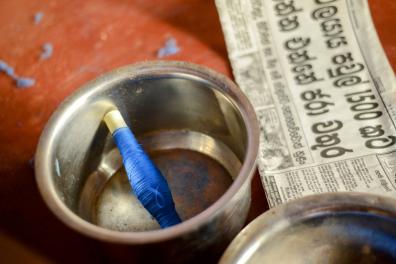This page has been translated automatically.
Sinhalese
Discover the language
Singhalese has linguistic characteristics that make it unique in its geographical environment. This originality is due to the contribution of the languages and cultures that have shaped its identity: its Indo-Aryan origin (Sinhala is related to the languages of North India); a very long contact with a Dravidian language, Tamil; the existence on the island of an ancient indigenous language called Elu, little known to linguists, which is neither Indo-Aryan nor Dravidian, but which has left its mark on Sinhala; and a large stock of vocabulary imported from Portugal, Holland and England. The language closest to it is Dhivehi, spoken today in the Maldive Islands.
There are two quite distinct variants of Sinhala: a form known as Spoken Sinhala, and a form known as Literary Sinhala. Literary Sinhala is very distinct from spoken Sinhala in terms of pronunciation, grammar and above all vocabulary, which is enriched by many borrowings from Sanskrit and Pali, the two mother languages. It is a language found in written communication, in oral speeches prepared in advance, in written and televised newspapers, in narrative novels, or in treatises.
Training courses
Licence LLCER - Asia and Pacific course - Sinhala
Licence LLCER - Asia and Pacific course - bilingual Sinhala/Language 2
Discover the atmosphere of Sinhala classes through students' productions.
Discover video of our trip to Sri Lanka.
Discover the traditional puppet show put on by the 2024 class of Sinhala students.
